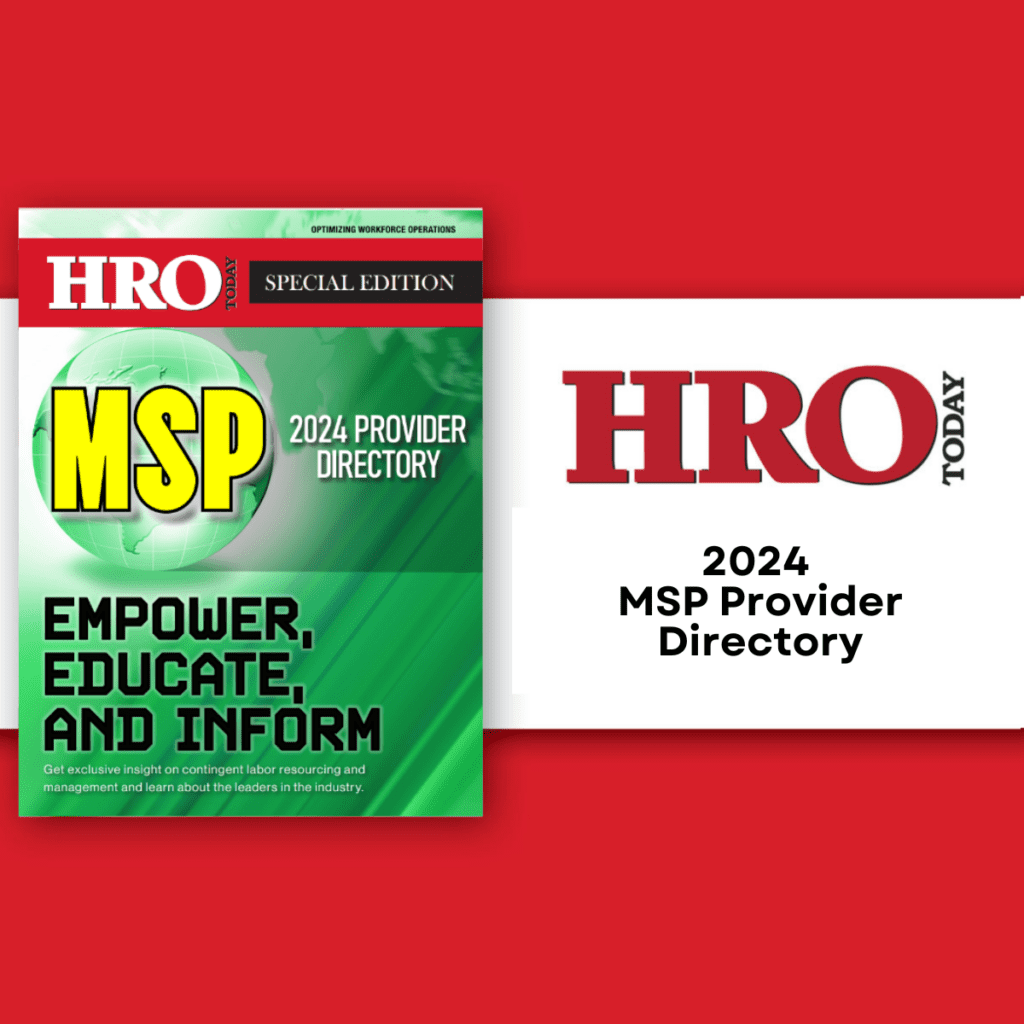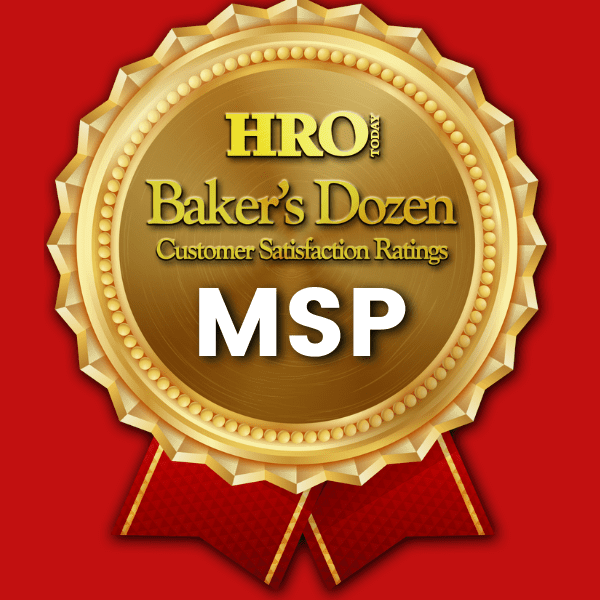 A roundtable of executives share the rewards they reap from their contingent labor management program.
A roundtable of executives share the rewards they reap from their contingent labor management program.
By Debbie Bolla
Managed service provider (MSP) programs have become a critical resource to HR and procurement departments in the last few years. The contingent labor market has grown significantly, with 30 percent of the workforce being classified as temporary. The bounty contingent labor brings is undeniable: Ardent Partners reports that 62 percent of organizations cite contingent labor as a vital component to achieving goals. But with it comes challenges. Organizations have looked to MSP programs to lessen the pressure and stress of maintaining compliance, visibility, and cost. Recently, HRO Today spoke with a group of practitioners to learn what they’ve gained from their MSP program. The value runs deep, and some benefits fall outside typical service level agreements.
Value: Real-Time Data
Four years ago Ed Ronan headed up a sourcing initiative for his organization BD, a manufacturer of medical devices and supplies. The strategic sourcing/category manager was seeking improvement to his current program that didn’t deliver visibility of contingent labor mainly because it lacked the technology to be able to report on it. So for the second-generation engagement, topping the list for Ronan was a strong vendor management system (VMS) that could deliver real-time data for BD’s 1,300 temporary workers in the United States and Puerto Rico. The organization has a diverse portfolio of temporary positions, including low-skill warehouse workers, high-skill engineers, and resources for quality management and clinical trial support.
Ronan found the technology and analytical support he was looking for with Agile•1. In addition to being able to reduce time-to-fill rates, the number of suppliers, and labor costs through standardization of rates, the engagement has brought a new strategic level into BD’s contingent labor management.
“We use the solution as a strategic tool,” he says. “We are trying to understand where are pain points are in filling positions.”
How? By leveraging analytics from Agile•1’s reporting module BANG! (business analytics for the next generation). It delivers multi-view, interactive data at a high level on dashboards and also provides filtering and deep-dive analysis.
“Through comprehensive reporting and dashboards, companies gain visibility into enterprise-wide data such as headcount, spend, cycle time, and trends for better decision making,” says David Lewis, senior vice president of Agile•1.
Ronan’s reports deliver data but in an extremely user- friendly way. For example, Ronan says he can access a heat map that shows spend across the U.S. and the size of bubble represents size of spend. It also can drill down to every aspect of contingent labor, including who is the worker at the site, who is the project manager, and bill rates for all workers. Ronan says this is especially helpful in locating outliers -workers with a much higher bill rate. This gives BD the opportunity to make sure everyone is aligned.
Ronan says the program has demonstrated value in a few ways -especially in the area of talent acquisition. BD was able to save money by eliminating the conversion fee to full-time status if the temp worker was with the firm for at least three months. “This gave us the option to try before we had to buy,” he says.
The success of the program has encouraged BD to leverage Agile•1 for some recruiting services. As Ronan says, “Our program has grown from ‘I need a body’ to a tool for talent acquisition and recruiting.”
Value: Auditing Assistance
Who knows the importance of leveraging data better than a data analysis company? So when Teradata implemented a second-generation MSP program in 2012, data capabilities were a top priority. The company manages more than 1,000 contingent worker assignments annually across 41 countries, says Richard J. Smith, global program manager for Teradata. Smith says the program is a partnership between three parties: a global MSP program through Pontoon, a global VMS through Fieldglass, and internal resources. The data that comes from the third-party providers allows Teradata’s internal group to foster strategic moves.
“Our partners have been able to work with us to provide aggregate data from their much larger data sets to help us with our program,” says Smith. “From there, we’ve been able to go beyond ‘what is happening’ to start to understand ‘why are these things happening,’ and even to think about how events and trends that are likely to impact our program.”
Another valuable aspect of the program is how Teradata can use its data for audit requests. “Our company is occasionally audited by the procurement organization of our customers or by a taxation authority in a country/ state/province in which we operate,” Smith says. “Where these audits cover Teradata’s service delivery, we find that our MSP does a fantastic job of responding to these audits based on the data available in our VMS.”
Marc Ensign and his team at Sonoco, a global supplier of innovative packaging solutions, experienced a major shift when they moved to a MSP program and VMS for the management of the company’s 2,000 annual contingent workers. The director, global category management, says prior to working with Broadleaf Results, the company would rely on 55 or more temp agencies to place temp labor. This led to various payment terms, fees, mark-ups, and a lot of jargon that was difficult to understand without third-party expertise. As Ensign says, “Most agency documentation doesn’t support the organization, it supports the agency.”
Implementing the MSP program provided valuable insight into shifting the risk from Sonoco to the agency through contract language. “Risk reduction has been the biggest benefit,” he says.
As it should be. “Part of the MSP’s responsibility is to manage risk and allocate it appropriately and consistently to protect its customers to whatever extent possible,” says Lynne Marie Finn, president and CEO of Broadleaf Results, Inc. “Our MSP agreement with suppliers contains standardized indemnification language making suppliers responsible for their company’s and employees’ actions arising from the services provided.”
Value: Streamlining Suppliers
Peggy Blaszkowski, senior sourcing manager of supply chain management for ATK, has a fresh perspective of MSP programs, with her initiative just over a year old. The aerospace, defense, and commercial products company hires between 400 and 600 temp workers per year ranging from manufacturing positions to highly sought IT workers and engineers. Blaszkowski says their previous approach leveraging temporary agencies for hires left them with zero understanding of the time it took to hire, the number of temp workers at any given time, and how long a temp worker had been with the company. Lack of visibility was an understatement. Plus invoicing and billing was a nightmare, with the company dealing with 40 to 50 different suppliers, all with different invoicing policies.
Now through a MSP program with Volt, ATK deals with only one invoice, streamlining a previously tedious process and saving time to boot. The company also has access to an annual basis supplier scorecard, which shows how many suppliers they are working with and allows suppliers to be rated by performance. Blaszkowski says in the past, supplier selected “was based on opinion; now it can be based on bill rates” and other data points.
Another improvement through the transparency the MSP program offers is ATK’s 12-month tenure policy. Previously, it was challenging to manage since the firm couldn’t track start and end dates of workers. Now, Blaszkowski receives notification on workers 30 days prior, two weeks prior, and one week prior to the 12-month mark of a temporary worker. Now it is easy to document and approve an extension.
Value: New Outlook on Savings
Before the U.S. launch of the MSP program with Yoh, Steve Kirk had very little insight into supplier management for his nearly 250 temp workers. This lead to no standardization in terms of margins, terms, and service levels. The director of sourcing for IMS Health, a company that provides information, services, and technology for the healthcare industry, says they now have seen “significant improvements to our costs, compliance, and processes.” How? In terms of contingent labor, the company can now track tenure, cost per hire, pay rates, margins, benchmarks, and term reasons. And IMS Health can even run quarterly reports to track service level agreements. “This allows us to manage the supply base much more effectively,” he says.
“Establishing and maintaining an effective staffing supply chain is the engine that makes the program run,” says Matt Rivera, VP of marketing and communications for Yoh. “Ultimately the suppliers can make the difference between filled jobs and long cycle times.”
But for Kirk, the value is so much more. He says that moving away from multiple suppliers has made life so much easier. He no longer has to deal with various sets of terms, spend analysis, different payment terms, and what he calls the distractions and noise for payment issues and invoicing. He says he sees the MSP program bringing a level of professionalism to the supplier management role and they can tweak and enhance supplier development, pay rate analysis, and tenure policy. With this off his plate, the next-level of cost savings is obtainable since Kirk has the opportunity to redeploy procurement resources to their spend categories -and deliver savings in new areas.














